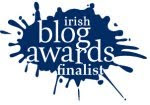Around the same time, Heineken went even further back in lager history and brewed a beer using the wild Patagonian yeast strain which was identified in 2011 as the origin -- the "mother" as their marketing guff puts it -- of all lager yeast. The resulting beer, H41°, had a moment in the sun with the beer press then went into hibernation. A couple of weeks ago, however, it started to appear in bars around Dublin and I caught up with it on a quiet Sunday afternoon in Idlewild.
 It looks like Heineken. If it wasn't for the tactile illuminated tap badge and the wordy brewer-signed pint glass I would have assumed this was the same old pilsner. On tasting, however, it presents quite a different vista. The first word I wrote down is "melanoidin". It has that particular mouth-coating big-bodied biscuit sweetness that I associate with amber-coloured malts and the whole genre of Vienna lager. I had seen people describe this as akin to a wheat beer and after a moment or two I understood why: partly it's just that big, not-quite-attenuated, greasy texture; but also there's a similar sort of fruit ester, verging on banana but not quite getting all the way there, to my mind. The hops are much less prominent than in a pils, even one like Heineken: just a very light lemony tang, no more than you'd find in a very average witbier.
It looks like Heineken. If it wasn't for the tactile illuminated tap badge and the wordy brewer-signed pint glass I would have assumed this was the same old pilsner. On tasting, however, it presents quite a different vista. The first word I wrote down is "melanoidin". It has that particular mouth-coating big-bodied biscuit sweetness that I associate with amber-coloured malts and the whole genre of Vienna lager. I had seen people describe this as akin to a wheat beer and after a moment or two I understood why: partly it's just that big, not-quite-attenuated, greasy texture; but also there's a similar sort of fruit ester, verging on banana but not quite getting all the way there, to my mind. The hops are much less prominent than in a pils, even one like Heineken: just a very light lemony tang, no more than you'd find in a very average witbier.What does the experiment teach us? Not a whole lot, in my case, other than the observation that proto-lager yeast isn't very efficient. The ABV here is 5.3% and with all that residual sugar in evidence I'm reckoning there was quite a hefty grain bill. From a consumer perspective you'd be as well drinking an old-fashioned lager: something like Samuel Adams Boston Lager will hit a lot of the same flavour points as this. I will give Heineken some credit for the experiment, however. This is far more interesting a brand extension than Heineken Light. That said, I haven't actually tasted Heineken Light yet. Stand by...






No comments:
Post a Comment